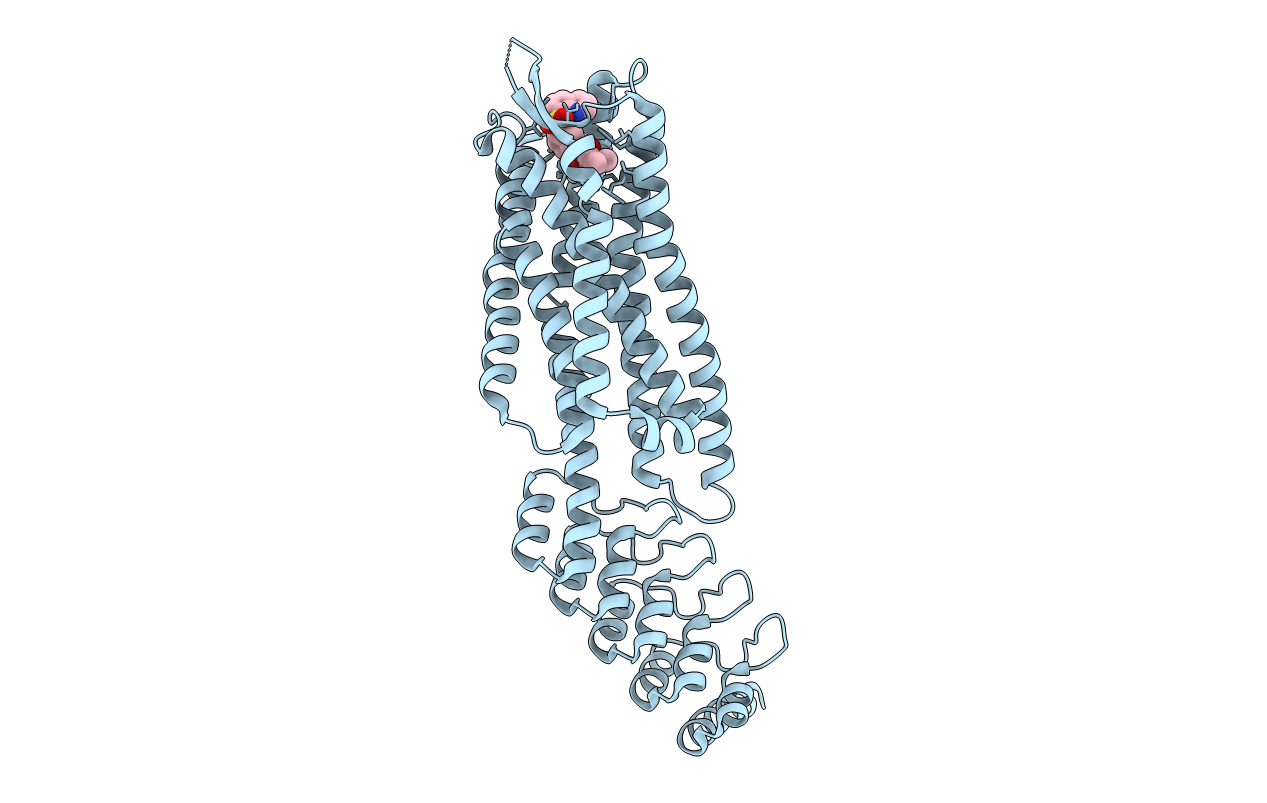
Deposition Date
2020-06-02
Release Date
2021-02-10
Last Version Date
2024-10-23
Entry Detail
PDB ID:
6Z8N
Keywords:
Title:
Crystal structure of the neurotensin receptor 1 in complex with the small-molecule full agonist SRI-9829
Biological Source:
Source Organism:
Rattus norvegicus (Taxon ID: 10116)
synthetic construct (Taxon ID: 32630)
synthetic construct (Taxon ID: 32630)
Host Organism:
Method Details:
Experimental Method:
Resolution:
2.80 Å
R-Value Free:
0.29
R-Value Work:
0.27
Space Group:
C 2 2 21


